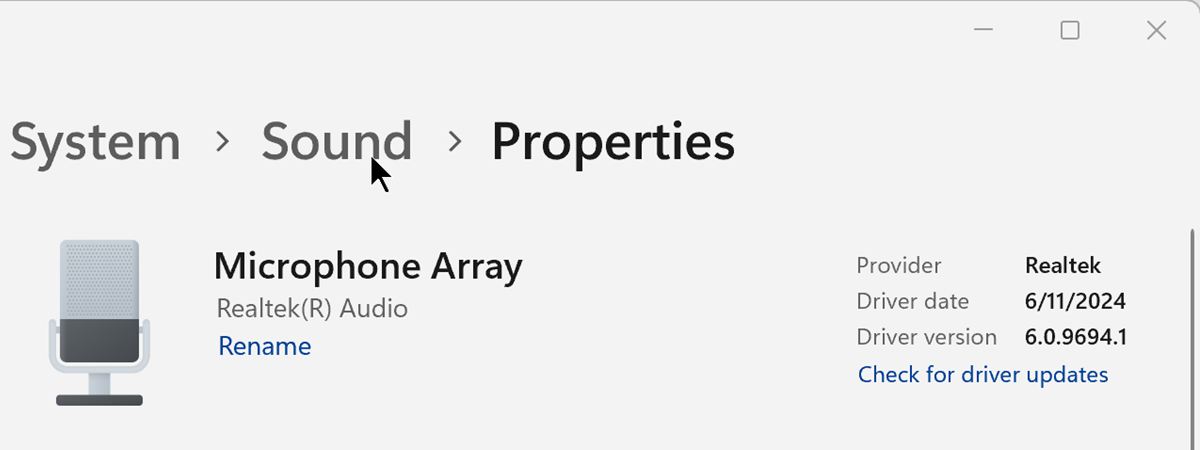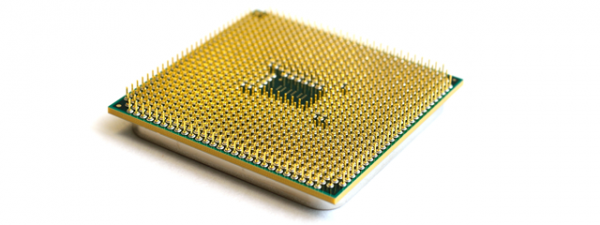
Many computers use processors with built-in integrated graphics that help them provide basic video features at low power consumption. However, some PCs also have dedicated video cards that are used for more demanding apps and games. Usually, Windows 11 automatically switches between graphics cards, depending on the apps you are using and the games you’re playing. However, sometimes, you might want to force a particular app or game to use the discrete video card or the built-in integrated graphics. So how do you force a game to use your dedicated and more powerful graphics card? In Windows 11, you can do this directly from the Settings app without having to search through Nvidia’s or AMD’s apps for the right settings. Here's how:
Why change the default graphics card a game uses? Why change the GPU used by specific apps?
Some desktop PCs and most laptops have graphics cards integrated into their processors. Integrated graphics are not powerful enough to manage demanding apps and games that require a lot of graphical power. That’s why many computers also have dedicated video cards, which use graphics chips usually manufactured by either Nvidia or AMD. The dedicated video cards are a lot more powerful, but they are also more power-hungry than the integrated graphics.

Many laptops and some computers have two graphics cards
To balance performance versus power usage, computers must be able to use the right graphics option for every app and game you run. If the integrated graphics chip is powerful enough for Paint 3D, that is what your computer should use. However, if you want to play the latest video game on Steam, it should switch to using the much more powerful Nvidia or AMD video card.
Usually, the switch between the two graphics options is done automatically by your graphics drivers. However, sometimes, some games (maybe in early development or games with bugs) might not switch to the dedicated video card. Another use case for this feature is troubleshooting the dedicated graphics card, in which case you would want to choose the integrated graphics over the discrete video card on your computer to see if the application or game is displayed correctly.
TIP: If you don’t know which video cards you have inside your laptop or PC read: 5 ways to find your exact graphics card model without opening your PC.
Now let’s see how to change what graphics card a game or an app uses.
Step 1. Open the graphics settings in Windows 11
Start by opening the Settings app. A quick way to do that is to press Windows + I on your keyboard. In the Settings app, make sure the System section is selected in the left pane. Then, select Display on the right side.

Click or tap on Display after opening the Settings app
Next, scroll until you see a link called Graphics and click or tap on it. You should find it under Related settings.
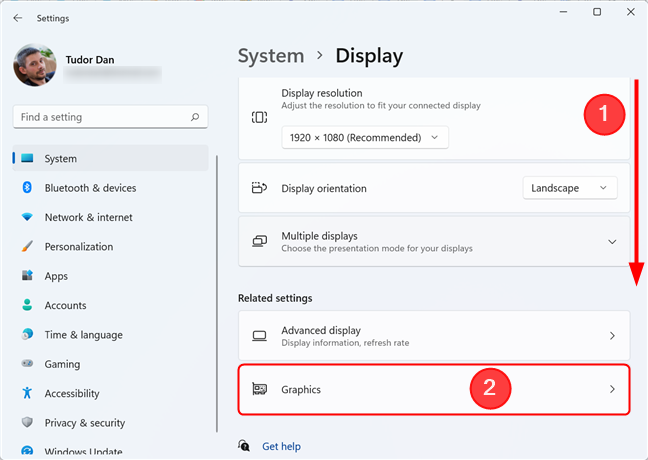
Open the Graphics section
On the Graphics page, there is a list of installed apps (which is not necessarily exhaustive), along with the graphics card they use by default. If the game or app you want to change is not on the list, go to step 2. If it is on the list, move on to step 3.
Step 2. Choose the app or game for which you want to change the graphics card
To configure a particular application or game, you must first choose its type: “Desktop app” or “Microsoft Store app.” If you want to configure an application or game that you installed from the Microsoft Store, choose the “Microsoft Store app.” Otherwise, choose the “Desktop app” option.
If you want to change what graphics card a game uses, the latter option (Desktop app) is usually the one you need to select. Click on the button below “Add an app” to expand the drop-down list and select the game or app type.

Choose the type of game or app that you want to configure
Now click or tap on the Browse button. If you chose a Desktop app, navigate through your Windows 11 computer and select the executable file of the app or game. After pressing the Add button, the application or game is added to the list of apps for which you can set what graphics card is used.
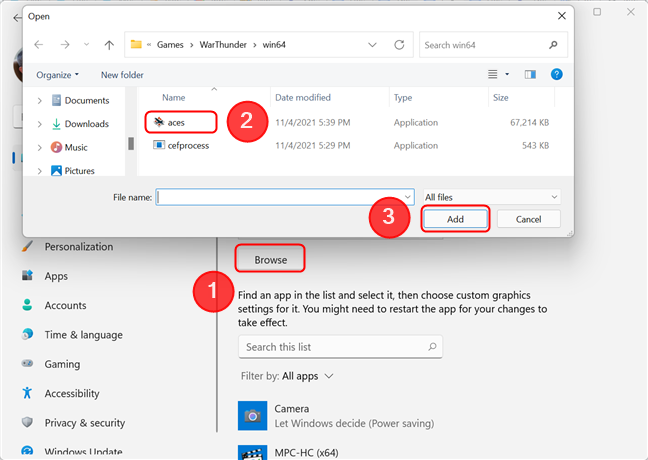
Selecting a game for which to force the graphics card used
If you chose to configure a “Microsoft Store app,” pressing Browse opens a new “Choose an app” window. Scroll to the app you want to configure and then click or tap on it. This adds the app to the list in the Graphics window.
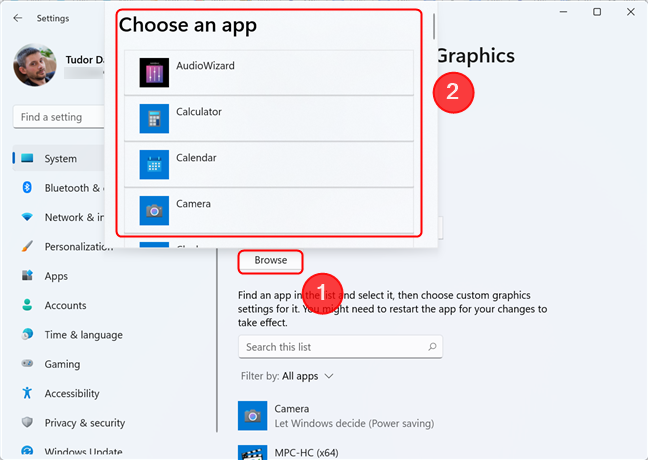
Select the app from the list - scroll down if necessary.
Step 3. How to change what graphics card a game or app uses
In the list of manageable apps and games in the Graphics window, search for the app you’re interested in, then click or tap on it. Now, click or tap on its Options button.

To force the use of a specific graphics card for a game, press Options
A new dialog called “Graphics preference” opens up. You can see the graphics cards that you can use on your computer, and which one saves power or offers better graphical performance.
For instance, on our laptop, we can “Let Windows decide,” or we can choose between:
- “Power saving” - the laptop’s integrated graphics Intel UHD Graphics chip found inside the Intel Core i7-10510U CPU processor, and
- “High performance” - the more powerful NVIDIA discrete graphics card found inside the laptop.
Choose the one you want to use for the selected app and then press Save.

How to change what graphics card a game uses
If you want to revert the change, select the game in the list, click on Options, select the “Let Windows decide” option and press Save.

Let Windows choose which video card to use
Did you force a game or an app to use your dedicated graphics card?
Now you know how to get a game (or app) to run on a specific graphics card in Windows 11. We are curious to know whether you used this feature to troubleshoot a hardware component or if you changed the default video card for other reasons. Also, do you think that this Windows 11 feature is more user-friendly than configuring the same settings in Nvidia’s or AMD’s video drivers? Use the comments below to let us know.


 08.11.2021
08.11.2021 